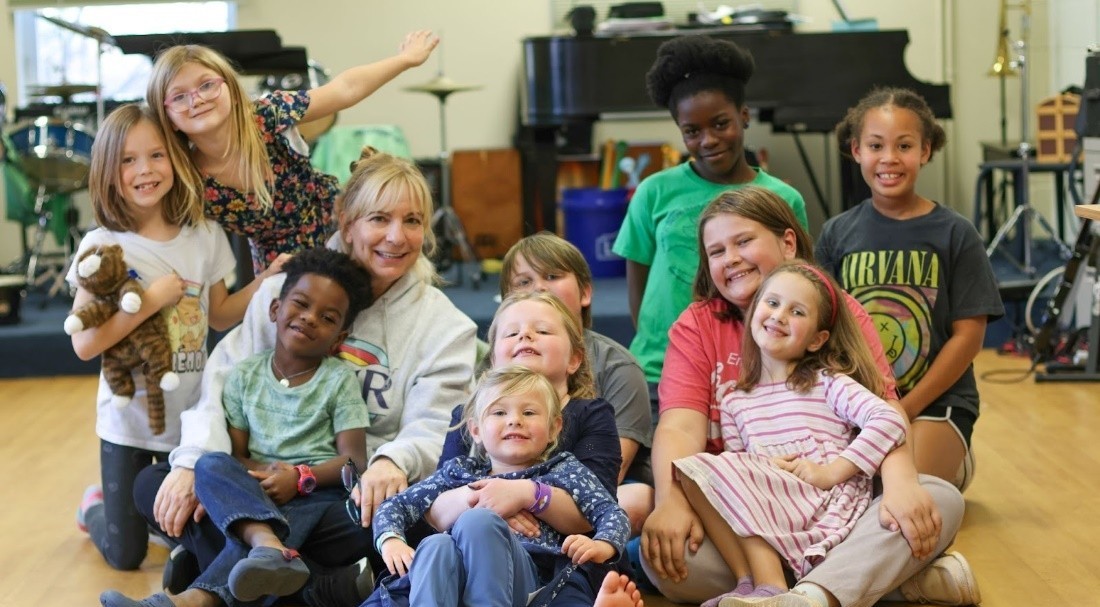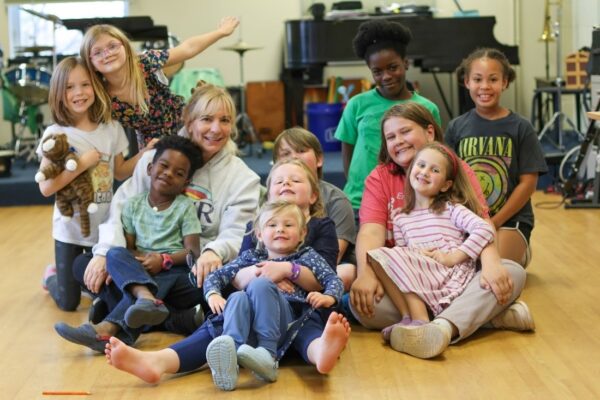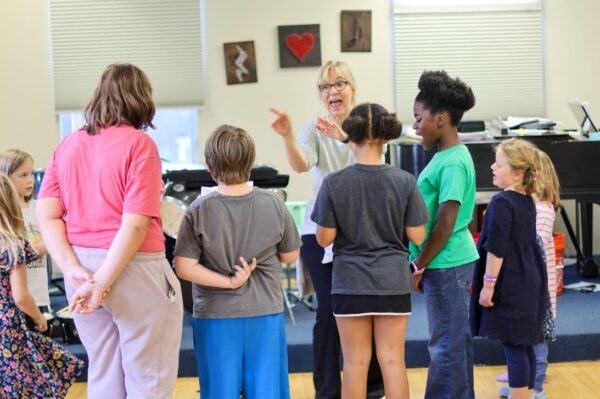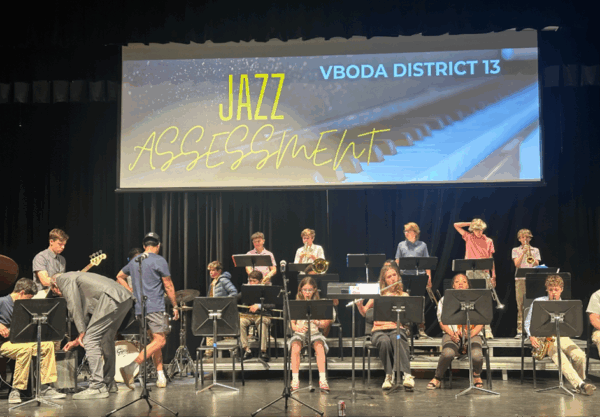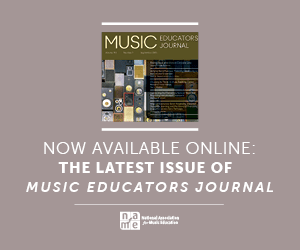/ News Posts / Resonating Rhythms: Building Empathy and Growth through Music
Resonating Rhythms
Building Empathy and Growth through Music
By Angela Kelly | Music Educator, Creative Music Room
Music educators often face a pair of familiar challenges: limited class time and big goals.
We’re tasked with teaching musical concepts like rhythm, melody, and form—along with harmony, dynamics, expression, and musical structure. On paper, these are the standards and skills students need to decode and perform music.
But in reality, our work goes far deeper.
We are also tasked with helping students make connections through music—to themselves, to each other, and to the wider world. Music becomes a lens through which they can explore identity, culture, and history. It opens up conversations about equity, justice, and representation, and gives students the tools to reflect on diverse human experiences across time and place.
Music as a Bridge: Connecting Students to Themselves and Others
When we teach songs from multiple cultures, when we examine the historical context behind a piece of music, or when we encourage students to bring their own cultural backgrounds into the classroom, we are creating space for inclusion and empathy. We’re showing students that music is not just something to learn—it is something that accompanies us all through our lives’ journeys: the soundtracks of our stories, our struggles, and our triumphs.
This is where music education truly aligns with Social and Emotional Learning (SEL): By promoting social awareness, responsible decision-making, and a deepened respect for others. We’re not just teaching content. We’re teaching connection.
Fortunately, music lends itself naturally to SEL. It invites self-expression, builds community, and helps students practice skills like empathy, collaboration, and reflection. When we design our lessons with these deeper goals in mind, we create experiences that don’t just teach music—they nurture the whole child.
Deliberate Design: Crafting Meaningful Music Lessons
Intentional layering is the key to expanding the impact of the lessons we teach. Every musical game, story, or activity can be a chance to support students’ emotional growth while reinforcing core musical skills. And when SEL is embedded into the learning—not added on—it becomes a seamless part of the classroom culture.
Consider rhythm. At first glance, rhythm instruction may seem purely technical—focused on counting, clapping, and precision. But beneath the surface, rhythm is a powerful tool for supporting both cognitive and emotional development. Studies have shown that learning rhythm enhances working memory, attention, motor coordination, and even early literacy skills.¹
From an SEL perspective, rhythm encourages students to develop focus, practice self-regulation, and build patience—skills essential to managing emotions and navigating group dynamics. Group rhythm activities also encourage students to listen deeply, wait their turn, and adjust to others, fostering cooperation and a sense of shared responsibility. When students clap or move together in time, they’re not just keeping a beat—they’re building community and reinforcing a sense of belonging.
Singing brings powerful benefits for students. It supports language development by strengthening listening skills, building vocabulary, and encouraging clear expression. But even more than that, singing taps into our emotions. It gives kids a way to express feelings they might not have words for yet and creates a safe space for emotional risk-taking.
When students sing together, they build confidence, reduce stress, and feel more connected to their peers. It’s also a natural way to practice empathy, as they explore emotions and stories through lyrics and melodies. Singing together teaches children that their voices matter, both on their own and as part of a group.
When rhythm and singing are used with intention, they become far more than musical exercises. They become vehicles for building identity, connection, and emotional intelligence—core pillars of Social and Emotional Learning.
One Way I Layer SEL into My Teaching
In my own classroom, I use a series of original story-based lessons called Rhythmic Tales to explore these connections. Each tale introduces a musical concept through a playful narrative featuring characters who model SEL themes like kindness, resilience, and teamwork.
One of my favorites is The Lion Who Lost His Roar, where students help a lion find his voice. As they chant and sing their way through the story, they also practice steady beat, rhythmic patterns, and vocal expression. But beyond the music, they’re engaging in conversations about courage, friendship, and finding strength with the help of others.
Another tale that emerged straight from a classroom moment is The Rumor Mill, inspired by a real conflict between students. When a child became upset about something that “someone said,” I turned the experience into a rhythmic story featuring characters like Moto Monkey, Bebop Butterfly, and Octavio Owl.
As the tale unfolds, students discover that spreading information without checking the facts can cause unnecessary harm. Through chanting, clapping, and echoing a catchy refrain—“Just because somebody told you doesn’t mean it’s true”—students internalize a powerful SEL message about integrity, emotional regulation, and social responsibility.
These stories do more than teach rhythm and beat. They help children rehearse life skills—in rhythm, in song, in community, and in a way they’ll remember. It’s also a reminder that music class can be a place where students feel heard, supported, and connected.
Cultivating Ownership through Musical Choices
Another impactful approach is incorporating student choice in selecting instruments, songs or themes. Having them engage with material that resonates personally can create a more inclusive and responsive classroom environment. One strategy for doing this might be asking students to share songs that are meaningful to them, and then to explore the emotions and stories behind their choices
A great example of this comes from my dear friend and colleague, the award-winning music educator and jazz band leader Greg Thomas. Greg likes to encourage our students to create and develop a musical idea/motif that will ultimately be added to a performance. As an example, Greg will give our jazz ensemble a simple 4-bar whole note harmony to learn, then invite the students to experiment performing that simple harmony with different rhythms.
After some practice and discussion, the class collectively decides on one of these rhythmic patterns and incorporates it into the performance. This allows the class to have a stake in the creative process that both personalizes and enriches the entire experience for all involved.
A Final Reflection
Whether through group singing, movement games, creative composition, or reflective listening, every music lesson holds the potential to nurture social and emotional growth. By layering SEL into our teaching, we offer students more than music. We offer them tools to understand themselves and to connect more meaningfully with others—inside the music room and beyond.
As music educators, we have the unique opportunity to make every beat, breath, and lyric mean something more. I encourage us all to be mindful of this opportunity and to leverage the unique power we have to help our students thrive and grow—not just as musicians, but as human beings.
¹ For example: Tierney & Kraus (2013), Slater & Kraus (2016), and Hallam (2010) on rhythm and cognitive/linguistic benefits.
About the author:
 NAfME member Angela Kelly is a flutist, music educator, and Licensed Body Mapping Educator based in Charlottesville, Virginia. With more than 20 years of experience, she is dedicated to helping young musicians discover their voices, explore rhythm, and build confidence. Angela serves as the Director of Music at Charlottesville Day School and is the founder of CreativeMusicRoom.com, a resource hub offering original songs, lesson plans, and activities that blend musical instruction with meaningful life lessons, emphasizing the integration of Social and Emotional Learning (SEL) into music education. Her mission is to support fellow educators while keeping the joy of music—and the heart of SEL—at the center of every class.
NAfME member Angela Kelly is a flutist, music educator, and Licensed Body Mapping Educator based in Charlottesville, Virginia. With more than 20 years of experience, she is dedicated to helping young musicians discover their voices, explore rhythm, and build confidence. Angela serves as the Director of Music at Charlottesville Day School and is the founder of CreativeMusicRoom.com, a resource hub offering original songs, lesson plans, and activities that blend musical instruction with meaningful life lessons, emphasizing the integration of Social and Emotional Learning (SEL) into music education. Her mission is to support fellow educators while keeping the joy of music—and the heart of SEL—at the center of every class.
Did this blog spur new ideas for your music program? Share them on Connect! Interested in reprinting this article? Please review the reprint guidelines.
The National Association for Music Education (NAfME) provides a number of forums for the sharing of information and opinion, including blogs and postings on our website, articles and columns in our magazines and journals, and postings to our Connect member portal. Unless specifically noted, the views expressed in these media do not necessarily represent the policy or views of the Association, its officers, or its employees.
Published Date
September 23, 2025
Category
- Diversity, Equity, Inclusion, and Access (DEIA)
- Representation
- Social Emotional Learning
Copyright
September 23, 2025. © National Association for Music Education (NAfME.org)
